How is My Property Protected During a Roof Replacement?
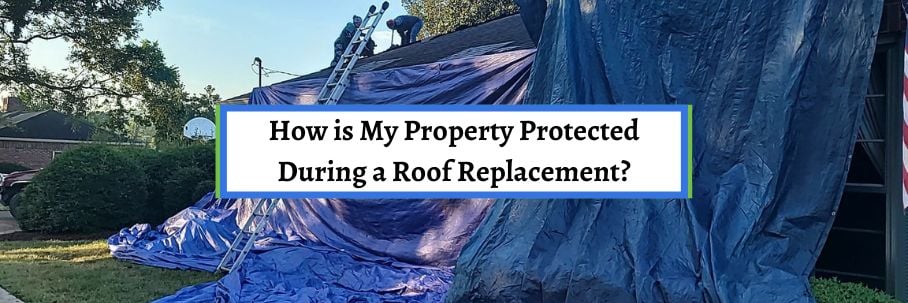
A roof replacement is a big home improvement project. It’s messy and chaotic and can damage the things around your home and property.
Luckily, a reputable roofing contractor takes proper precautions to take good care of your yard, landscaping, and more. But how do they do this?
For over 30 years, the team at Bill Ragan Roofing has helped homeowners understand every aspect of the roof replacement process. Because protecting your property is a big piece of this process, I’ll break down how a reputable roofer does it.
This article answers the following questions:
- How does a roofing contractor protect your property during a roof replacement?
- What should you do to protect your property during a roof replacement?
How does a roofing contractor protect your property during a roof replacement?
Before your roof replacement starts, your roofing contractor goes around your property to set up protective measures. They’ll cover and move anything out of the way that could be damaged by falling debris.
Below are things your roofer does to protect your property before your roof replacement begins.
Covering your attic
During your roof replacement, roofing debris, sawdust, and wood splinters get in your attic. Because of this, your roofer will cover anything and everything that’s up there.
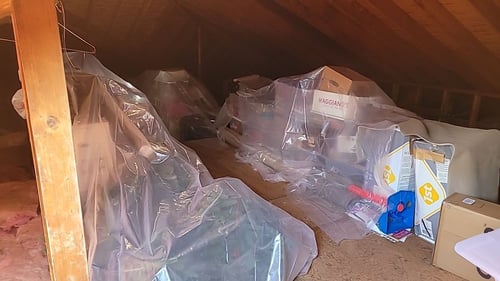
They’ll put plastic up on the ceilings to make a tent that shields falling debris or lay tarping/plastic over everything. If you don’t have an attic space or don’t care what’s up there, this protective measure may not apply to your roof replacement.
But if you do, tell your roofing contractor on the front end that you want to cover your attic before the project begins.
Tarping the foliage/landscaping around the base of your home
Once your attic is covered (if applicable), it’s time to set up protection for the landscaping around the base of your home. The most common way roofing contractors do this is by attaching tarps to the roof line that covers bushes, flowers, etc.
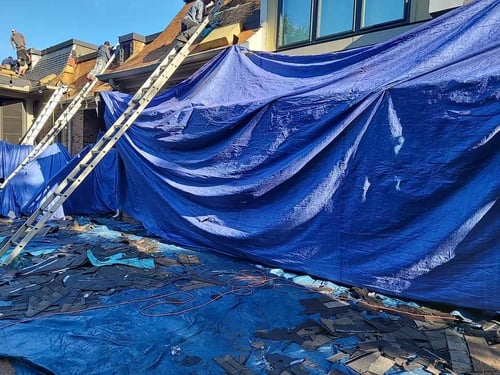
This lets roofing debris slide to the ground instead of falling and damaging your landscaping. Another way is to lay wooden boards at an angle against a wall that does the same thing as tarps.
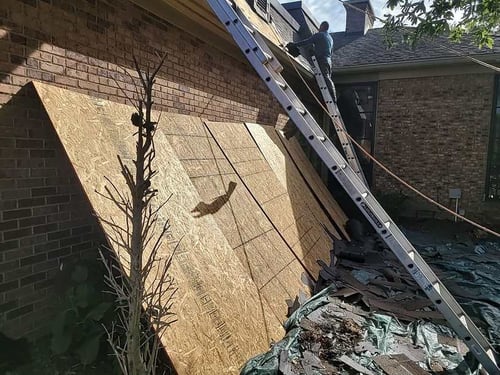
A roofing contractor uses this method mainly during the summer so heat doesn’t build up under the tarps and ruin the plant life.
Covering your HVAC system without blocking it
Just like covering plant life, your HVAC should be covered, too. However, most roofing contractors just lay a wooden board over it and block the air flow.
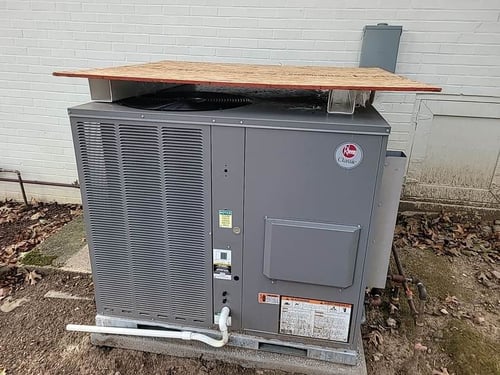
That’s why it’s better to angle wooden boards against a wall to cover the HVAC unit. They could also cut some PVC and lay wooden boards over them so it’s still protected, but there’s open airflow.
No matter how they do it, your roofing contractor should always cover and protect your HVAC unit.
Covering your pool (if applicable)
If you have one, your roofing contractor must cover your entire pool with a fresh out of the wrapper tarp. If the tarp isn’t new or your pool isn’t covered, fiberglass from the torn-off shingles sticks to the top of the water.
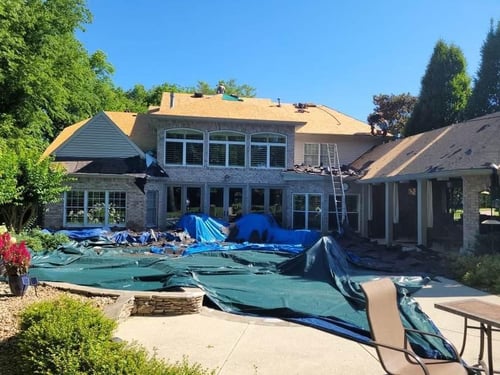
Once it runs through the filter, the fiberglass clogs and damages your pool’s pumps. Because of this, your pool should stay covered until the entire roof replacement process is completed.
Moving everything off your patio or deck
Finally, your roofing contractor will move or cover items on your patio or wooden deck. While you can also do this yourself, they’ll take pictures of everything laid out to ensure each item returns to the right spot.
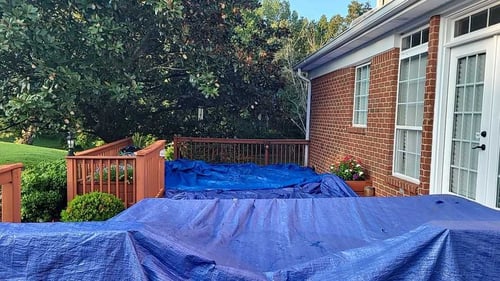
Just know they won’t move anything like a grill connected to a gas line. In this scenario, they’ll take plywood to protect like they did the HVAC unit.
Once everything is a safe distance away, your roofing contractor can begin replacing your roof.
Staying on paved surfaces
During your roof replacement, vehicles and a dump trailer will be on your property. It’s absolutely crucial for all of the roofing contractor’s vehicles to stay on paved surfaces.
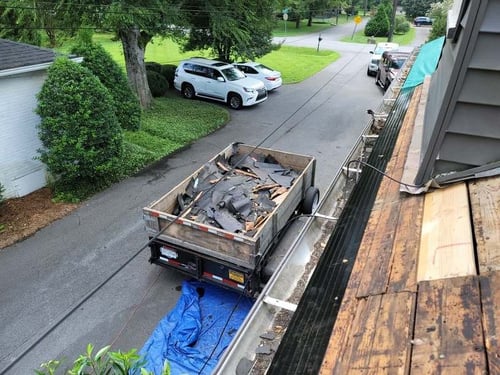
This protects your lawn, landscaping, and everything lying underneath the ground. The last thing you want is a truck with a dump trailer tearing through your grass, causing divots and ripping up grass.
You also don’t want them to hit anything underneath your yard, like sprinkler systems, gas lines, power lines, septic tanks, etc. While this is unlikely, the chance of it happening is enough for your roofing contractor to keep everything on paved surfaces.
What should you do to protect your property during a roof replacement?
Now you know your roofing contractor protects the outside of your home and the attic if it needs to be covered. But what should you do before your roof replacement starts?
The only thing you have to protect is whatever you have hanging on the walls of your home. While this is mainly a concern when hand nailing, vibrations during the entire process can also knock things down.
That’s why I recommend taking anything irreplaceable or valuable on a shelf, in a hallway, or on a mantle and setting it on the floor until the job is done. However, it’s really your decision.
What does the rest of the roof replacement process look like?
Your roofing contractor should do everything they can to protect your home, yard, and anything else on your property during a roof replacement. This is simply because protecting your property is the right way to do things.
In fact, it’s a crucial piece of a reputable roofing contractor’s process. But that’s just it; it’s one piece.
Understanding the full roof replacement process prepares you for the most important day in your roof's life. The last thing you want is to see the chaos of getting a new roof and be shocked.
That’s why I wrote another article breaking down the roof replacement process.
Check out the 8-Step Process to Replace Your Roof so you know exactly what to expect on the day of your replacement.


